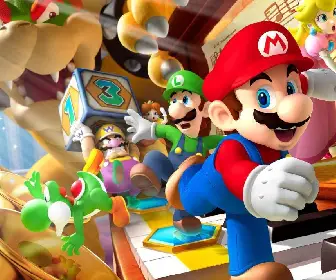Help Us Improve This Tool
We would LOVE to hear your FEEDBACK on this tool!
How to Use Super Mario Font Generator
If you're a Super Mario fan, our Super Mario Font Generator will bring a touch of Mushroom Kingdom magic to your projects. Whether you’re designing birthday party invites, creating Mario-themed artwork, or adding a playful Mario touch to your designs, our tool makes it easy to convert your text into that classic Mario style. Here’s how to get started:
- Enter your text: Type the text you want to transform into the input box. Whether it’s character names, memorable quotes, or any other text you want in the Mario font, this is where you start.
- Pick a font: Select from three distinctive font styles to find the perfect Mario look for your project.
- Add effects: Enhance your text with fun effects like shadows. Customize the shadow color and size to make your text pop and capture the playful essence of Mario.
- Choose a background: Select backgrounds that fit your Mario-themed text. You can also adjust the background blur to ensure your text stands out.
- Generate your design: Click ‘Generate’ to see your text in the Super Mario font style. Adjust the settings as needed until you’re happy with the result.
- Download or share: Once your design is ready, download the image or share it directly on social media. Show off your Mario-inspired creations to friends and fellow fans!
Our Super Mario Font Generator is ideal for gamers, event organizers, and anyone looking to add a touch of Super Mario fun to their designs. Jump into the world of Mario creativity today!
History of Super Mario
Super Mario is one of the most iconic and influential video game franchises ever created. Its history spans decades, evolving from a simple arcade game into a global phenomenon.
Origins and Creation (1980s)
Early Concepts: The origins of Super Mario can be traced back to the early 1980s when Nintendo sought to create a new game following the success of "Donkey Kong." The character of Mario, originally known as "Jumpman," was created by Shigeru Miyamoto and introduced in this arcade game.
Donkey Kong and Mario's Debut: Mario made his debut in the 1981 arcade game "Donkey Kong," where he was tasked with rescuing the damsel in distress, Pauline, from the giant ape, Donkey Kong. This game established Mario’s characteristics as a carpenter with a strong sense of heroism.
Super Mario Bros. (1985): The true breakthrough came with "Super Mario Bros.," released for the Nintendo Entertainment System (NES) in 1985. Created by Shigeru Miyamoto and Takashi Tezuka, this game revolutionized the platforming genre. It introduced the Mushroom Kingdom, Bowser, and Princess Peach, and set the standard for 2D side-scrolling platformers with its innovative gameplay mechanics, such as jumping, power-ups, and hidden secrets.
Expansion and Innovation (1990s)
Super Mario World (1990): Released for the Super Nintendo Entertainment System (SNES), "Super Mario World" expanded the Mario universe with the introduction of Yoshi, Mario’s dinosaur companion. This game featured a vast world map and introduced new gameplay elements like Cape Mario.
Super Mario 64 (1996): With the launch of the Nintendo 64, "Super Mario 64" marked Mario's transition into 3D gaming. This groundbreaking game, developed by Miyamoto and his team, was a critical and commercial success, showcasing an expansive 3D world and open-level design. It set the standard for 3D platformers with its innovative controls and design.
Modern Era and Continued Success (2000s - Present)
Super Mario Sunshine (2002): For the Nintendo GameCube, "Super Mario Sunshine" brought new mechanics, such as the use of the FLUDD water pack. It was noted for its vibrant, tropical setting and creative levels.
Super Mario Galaxy (2007): Released for the Nintendo Wii, "Super Mario Galaxy" redefined 3D platforming with its gravity-defying gameplay and imaginative level design. It was praised for its inventive levels and orchestral score.
Super Mario Odyssey (2017): A major hit for the Nintendo Switch, "Super Mario Odyssey" allowed players to explore various kingdoms with open-world elements and introduced Cappy, a sentient hat that Mario uses to possess objects and enemies. The game received widespread acclaim for its creativity and level design.
Super Mario Maker Series: Starting in 2015, "Super Mario Maker" and its sequel allowed players to create and share their own Mario levels. This series has empowered fans to design their own levels and share them with the community, continuing Mario’s legacy of creativity and innovation.
Cultural Impact
Super Mario has become a cultural icon, with a significant influence on the video game industry and popular culture. The franchise has expanded beyond games into various media, including television shows, comics, merchandise, and even a feature film.
The development of Super Mario reflects Nintendo’s commitment to innovation and quality. From its humble beginnings to its status as a global entertainment phenomenon, Super Mario remains a beloved and influential part of gaming history.



